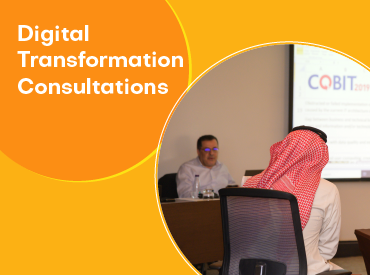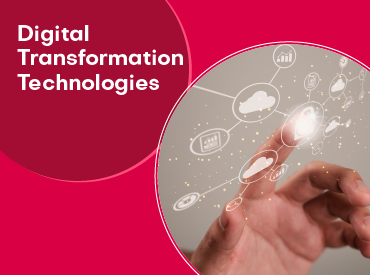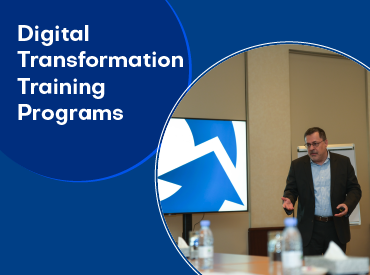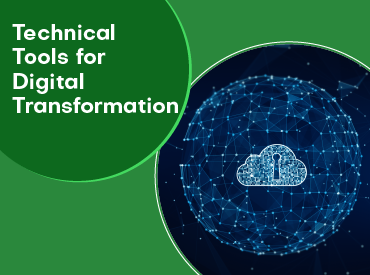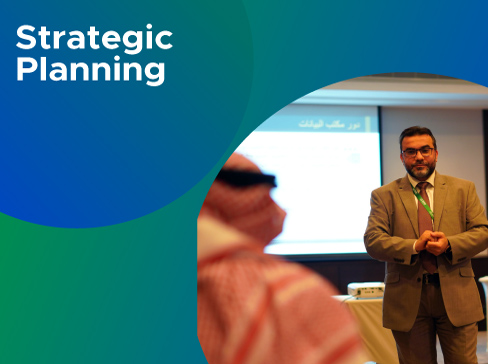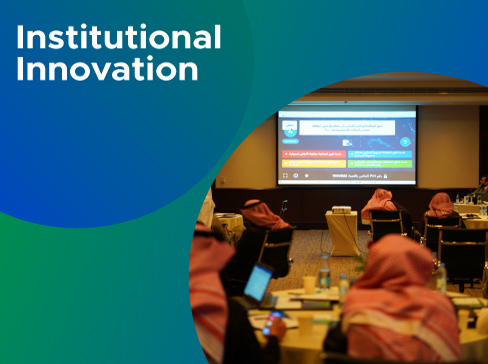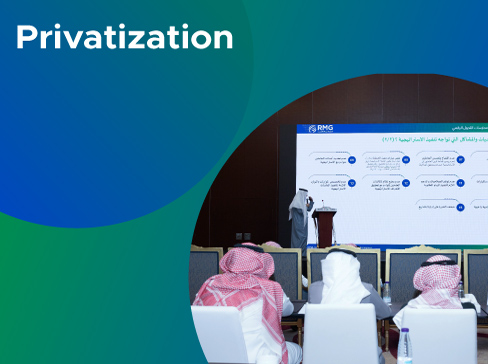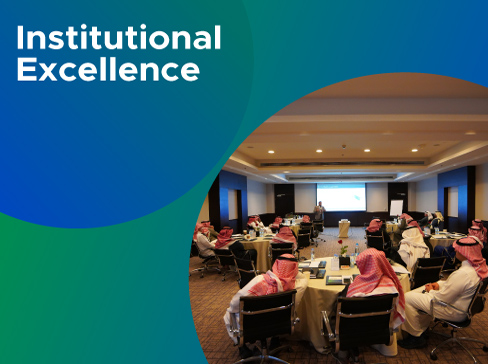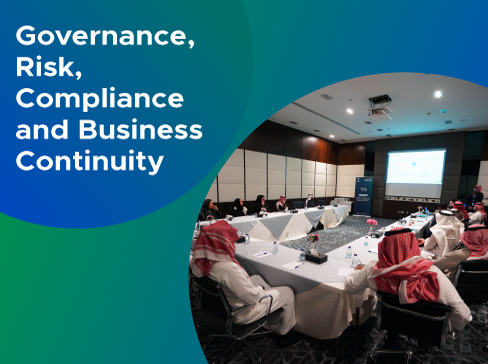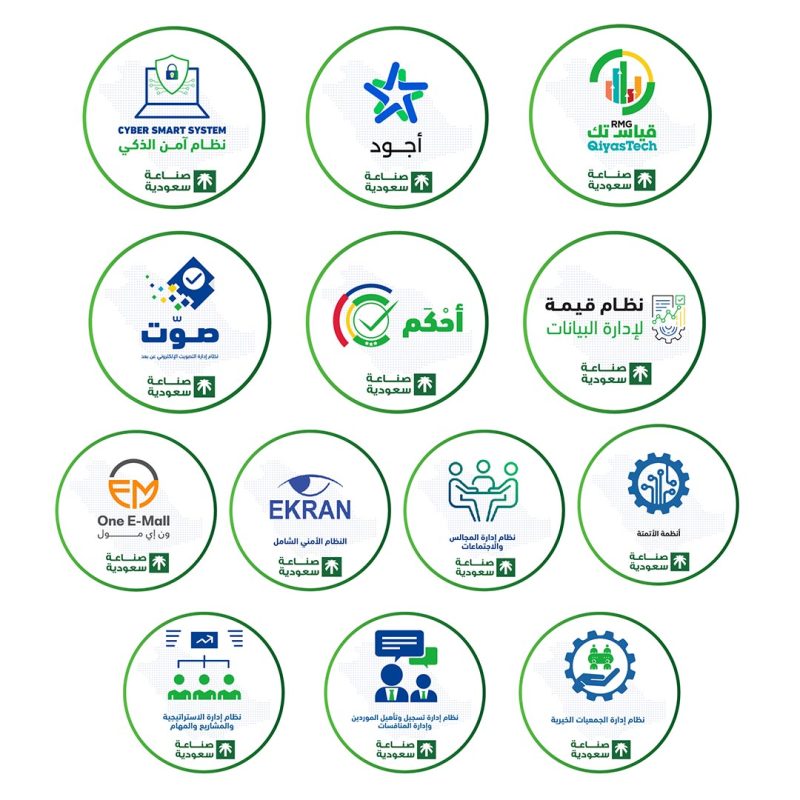A Roadmap for Understanding and Implementing The Test Maturity Model Integration (TMMI)
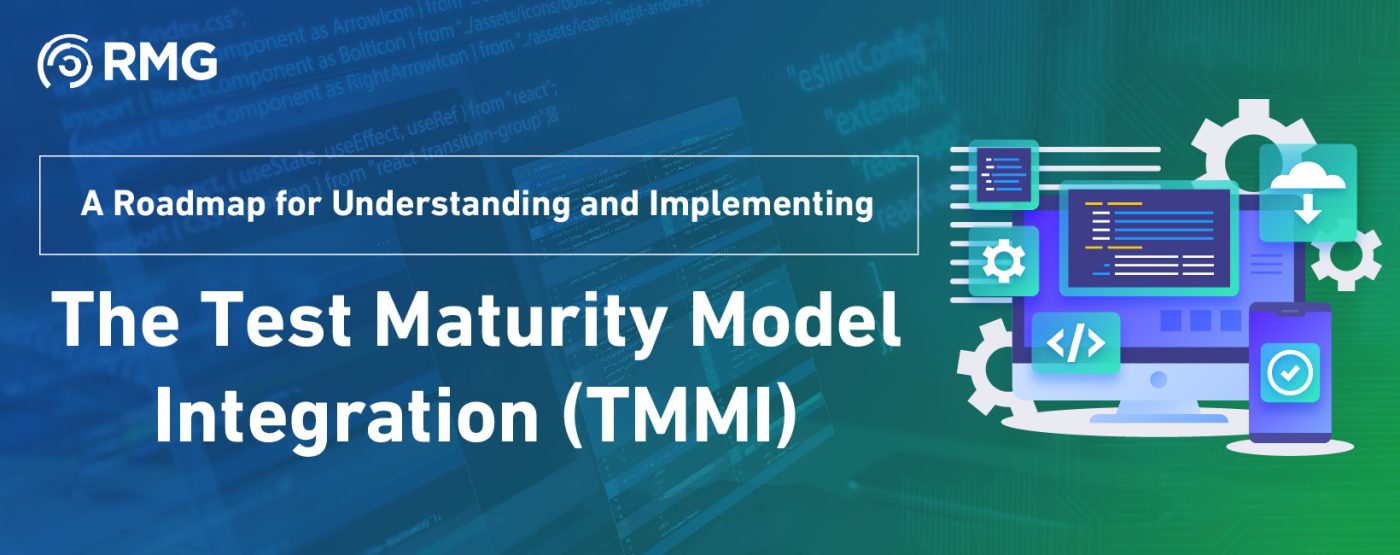
In an era of rapidly evolving software, ensuring software quality and reliability has become crucial for organizations and businesses. As organizations strive to improve testing processes and product quality, they often use established frameworks for guidance. The Test Maturity Model Integration (TMMI) is one of the most significant frameworks that has gained great importance among organizations, providing a structured approach to improving testing processes and achieving higher levels of quality assurance.
The Development of the TMMI Model
The Test Maturity Model Integration (TMMI) was developed in response to the growing need for a structured and unified framework that focuses exclusively on improving the software testing process.
The initial version of this model was introduced in 2005 by the TMMI Foundation, a non-profit organization dedicated to improving testing processes.
TMMI was inspired by the Capability Maturity Model Integration (CMMI), which focuses on software development and improving organizational processes in general. TMMI differs by focusing specifically on the testing field.
The testing process poses unique challenges and requires precisely tailored guidelines. Therefore, TMMI was designed to provide a comprehensive maturity model through which the testing processes within an organization can be evaluated and improved, helping companies produce higher-quality software.
Since its inception, TMMI has gained global acceptance as a critical framework for improving testing processes in organizations and businesses, and it can support various development methodologies such as Agile and DevOps.
What is TMMI?
TMMI stands for Test Maturity Model Integration, providing a structured approach to evaluating and improving the maturity of testing processes in organizations. Inspired by the Capability Maturity Model Integration (CMMI), TMMI focuses solely on testing and quality assurance.
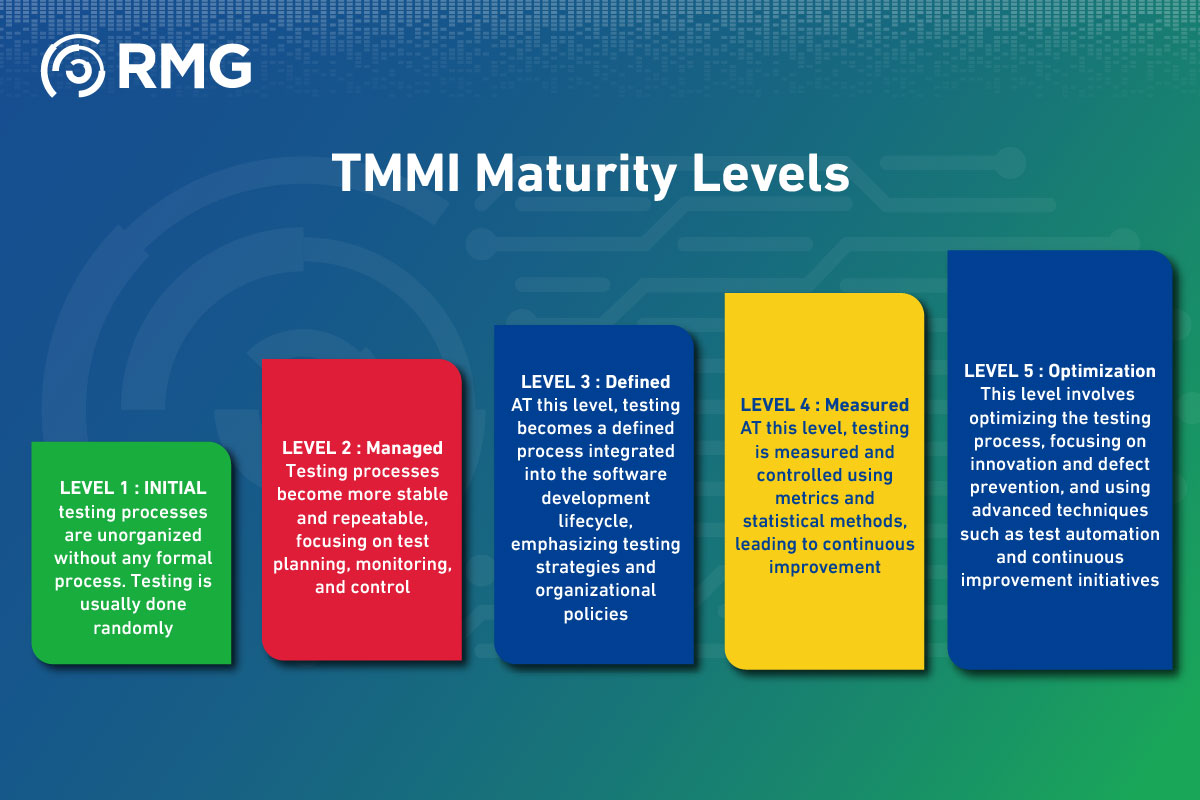
TMMI Maturity Levels
This model presents a framework consisting of five maturity levels that help organizations enhance the efficiency and effectiveness of their testing activities. We can explain these levels in detail as follows:
Level 1
Initial – testing processes are unorganized without any formal process. Testing is usually done randomly.
Level 2
Managed. Testing processes become more stable and repeatable, focusing on test planning, monitoring, and control.
Level 3
Defined – At this level, testing becomes a defined process integrated into the software development lifecycle, emphasizing testing strategies and organizational policies.
Level 4
Measured – At this level, testing is measured and controlled using metrics and statistical methods, leading to continuous improvement.
Level 5
Optimization – This level involves optimizing the testing process, focusing on innovation and defect prevention, and using advanced techniques such as test automation and continuous improvement initiatives.
Process Areas
Each maturity level includes specific process areas that organizations must focus on to improve their testing practices.
These areas guide key activities and best practices for progressing through maturity levels.
They help organizations achieve a high level of maturity in their testing processes, contributing to enhanced product quality and overall operational efficiency.
TAM (TMMi Assessment Method)
The TMMi model includes a comprehensive assessment framework to evaluate maturity testing levels.
This framework typically involves a detailed assessment process, including interviews, document reviews, and process observations, to identify strengths and weaknesses across the maturity levels and specific process areas.
The TMMi Assessment Method (TAM) is an accredited mechanism for conducting assessments of testing processes in line with the TMMi model. TMMi Foundation developed it and it is available for organizations and businesses.
What are the benefits of applying the TMMI model?
Organizations can achieve numerous benefits and positive outcomes by applying the TMMi model to develop their software quality assurance processes. Some of the key benefits include:
– Improved product quality: By providing a structured and repeatable testing process, TMMi helps ensure comprehensive testing of software products, resulting in fewer defects in the final release.
– Increased efficiency: Through streamlined processes and clear roles, organizations can reduce repetitive tasks, minimize rework, and speed up the testing process.
– Cost savings: As testing practices evolve, the costs associated with identifying and fixing defects decrease, especially when discovering issues early in the development cycle.
– Better risk management: TMMi promotes proactive testing, enabling organizations to identify and mitigate risks early, ensuring more predictable outcomes.
– Enhanced customer satisfaction: A reliable, high-quality product leads to better customer experiences, increasing their satisfaction and loyalty.
Which industries benefit from applying the TMMI model?
The TMMi model is suitable for multiple organizations and industries, particularly those that recognize the importance of testing in the software development process. Here are some of the critical sectors where TMMi should be applied:
Software development companies
For the software-developers-companies as a primary product or service, TMMi provides a structured approach to improving testing quality and product reliability.
IT departments
Internal IT departments managing complex systems and infrastructures can benefit from TMMi to ensure thorough testing of solutions and adherence to operational standards.
Regulated industries
Sectors such as finance, healthcare, and automotive, where software defects can have serious consequences, should adopt TMMi to ensure compliance with safety standards and regulations.
Organizations relying on outsourced testing
Businesses that depend on external service providers for testing can use TMMi to assess and standardize the quality of testing work.
What are the common challenges organizations face when implementing the TMMI model?
Although TMMi provides a robust framework for improving testing maturity, organizations often encounter several challenges when attempting to implement it. Key challenges include:
– Cultural resistance: Employees may resist changes to established processes, especially if they do not fully understand the benefits of adopting a structured testing model.
– Resource constraints: Implementing TMMi requires time, effort, and resources. Organizations with limited budgets or workforces may struggle to make the necessary changes.
– Lack of skilled professionals: TMMi implementation requires expertise in testing processes. A shortage of trained professionals can delay or hinder successful adoption.
– Integration with existing processes: Organizations already using other process improvement models may find it challenging to integrate TMMi without causing disruptions or confusion.
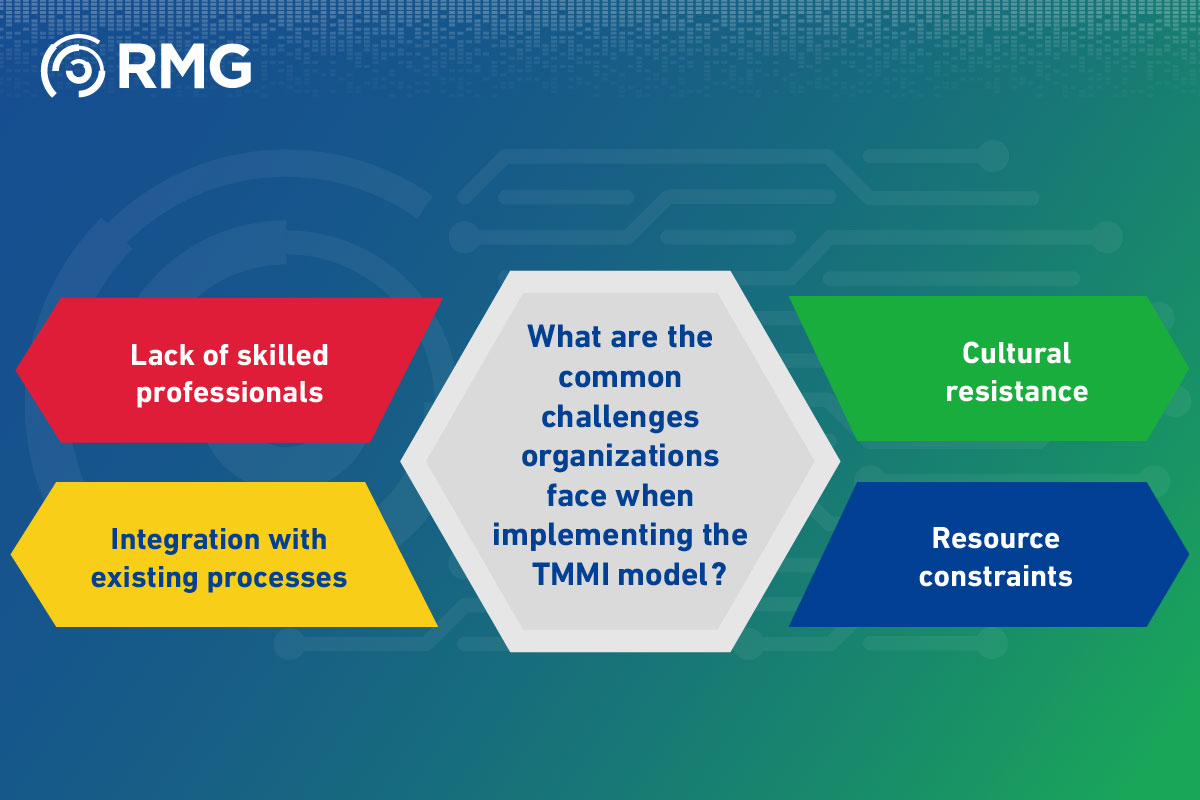
How does the TMMI model align with Software Development Life Cycles (SDLCs)?
The TMMi model is flexible and can be applied across various SDLCs in different industries, as follows:
Waterfall
In a Waterfall environment, TMMi ensures that testing is integrated at each stage rather than left only to the final phase. Testing processes and reviews are organized for each stage, reducing the risk of defects in later phases.
Agile
Agile development focuses on iterative cycles and rapid delivery, and TMMi can be adapted to these fast-paced environments. The model emphasizes the continuous integration of testing into each cycle, enabling faster feedback and continuous improvement.
DevOps
With DevOps' focus on continuous integration and continuous delivery (CI/CD), TMMi encourages automated testing and continuous process improvement, helping organizations maintain quality while delivering quickly.
Hybrid models
The flexibility of TMMi allows it to be applied to hybrid models, where organizations can combine aspects of Agile, Waterfall, or DevOps to suit their unique needs.
TMMi Implementation Roadmap
To successfully implement the TMMi model, organizations should follow a structured roadmap by applying the following steps:
– Assessment: Start with a comprehensive assessment of the current test maturity. Understand where the organization stands in testing processes and where improvements are needed.
– Goal Setting: Set clear goals and define the desired maturity level. It is important to align these goals with the organization’s needs and strategic objectives.
– Planning: Develop a detailed action plan outlining the steps to move from the current state to the target maturity level. This plan should include timelines, resource allocation, and process changes.
– Implementing Changes: Begin implementing the necessary changes to improve test maturity. This process may involve redesigning processes, training employees, and introducing new tools and technologies.
– Monitoring and Measurement: Continuously monitor progress against your goals. Use metrics and key performance indicators (KPIs) to evaluate the effectiveness of the test process improvements.
– Continuous Improvement: Once the goals are achieved, continue fostering innovation. Move to higher levels of TMMi by adopting advanced practices such as automation, defect prevention, and process innovation.
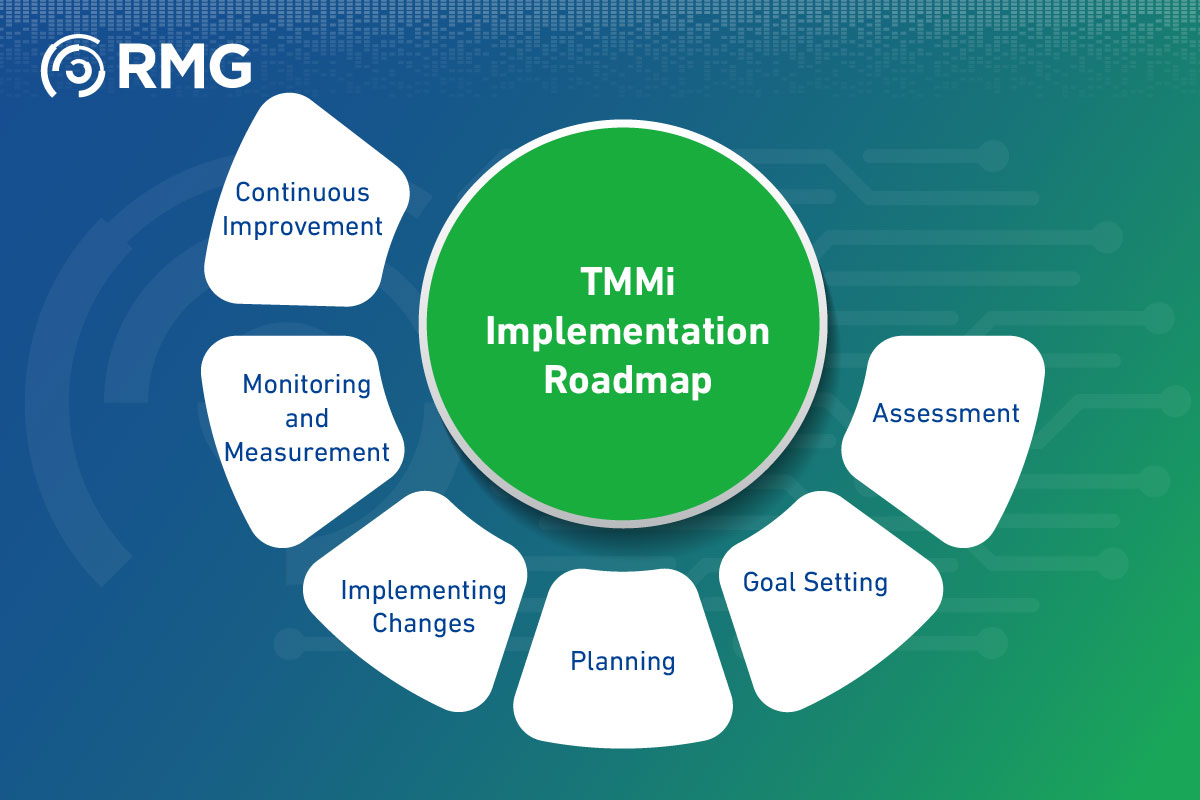
How do TMMi and CMMI work together?
TMMi complements the CMMI model by focusing specifically on the testing process. While CMMI covers the entire scope of software development, including project management, requirements, and configuration management, it does not delve deeply into the testing process. This process is where TMMi plays a role by offering a rigorous and structured approach to improving test maturity, as follows:
– Improving Development and Testing Maturity: CMMI helps organizations improve their development practices, while TMMI ensures the same level of maturity for testing processes. Applying both models allows organizations to coordinate development and testing activities more effectively, improve product quality, and more efficient project delivery.
– Integrated Process Improvement: CMMI and TMMi emphasize the integrating processes across the software development lifecycle. When applied together, organizations can align testing processes with broader organizational goals, ensuring that testing becomes an integral part of the development process rather than a separate activity.
– Shared Metrics and Measurements: Both models emphasize measurement and continuous improvement.
Organizations can develop a unified set of metrics to monitor the performance of both development and testing by applying TMMi and CMMI together. This process leads to more informed decision-making and a holistic view of project quality and efficiency.
– Risk Management: CMMI focuses on risk management across the project lifecycle, while TMMi focuses on identifying risks related to testing. The two models provide a comprehensive framework for risk management, covering both development and testing risks, increasing the likelihood of project success.
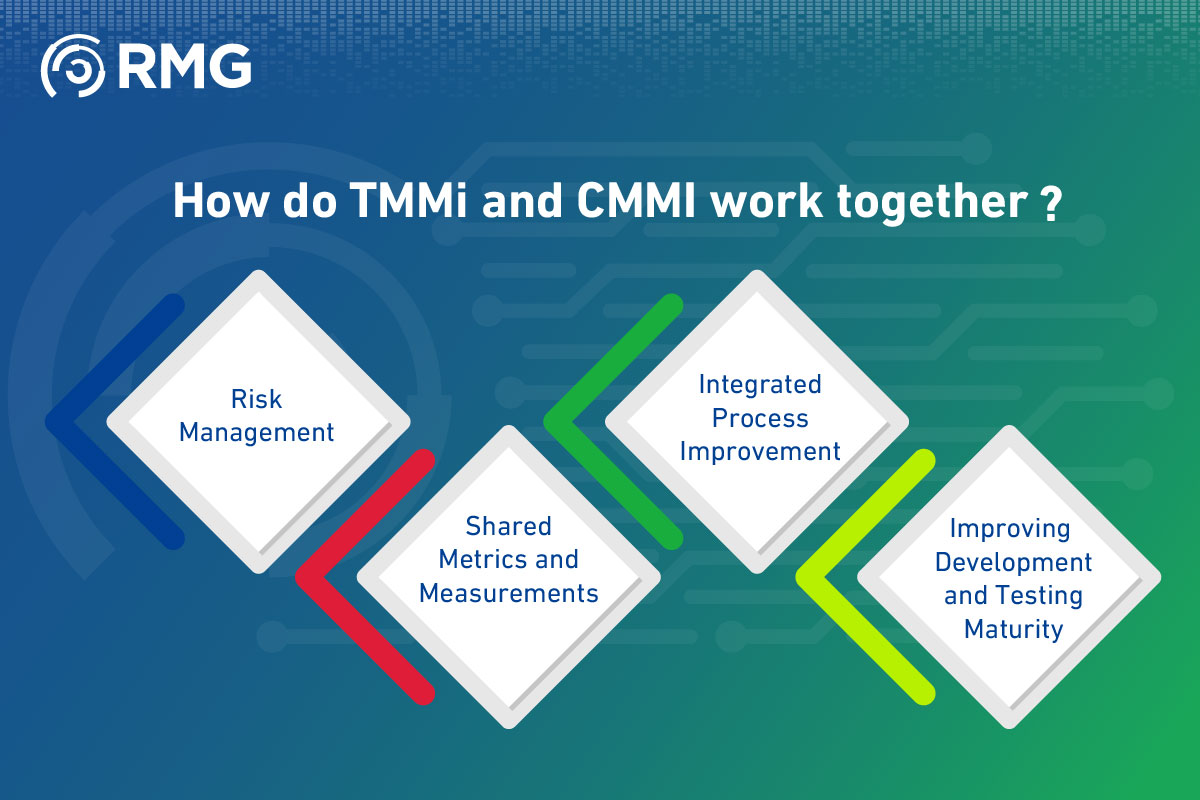
Benefits of Joint Implementation of TMMi and CMMI
– Comprehensive Process Improvement: Adopting both models enhances development and testing practices, enabling organizations to improve their software engineering capabilities from start to finish.
– Increased Alignment: When development and testing processes follow maturity models, they become more aligned.
This process ensures that equally mature testing practices support development process improvements.
– Improved Quality Assurance: CMMI ensures that product development processes are mature and efficient, while TMMi ensures rigorous product testing and improves product quality.
– Cost Efficiency: Organizations applying both models can achieve cost efficiency by identifying and addressing defects early in the development process and by streamlining workflows for both development and testing.
– Enhanced Customer Satisfaction: Delivering high-quality products with fewer defects, on time, and within budget improves customer satisfaction and loyalty.
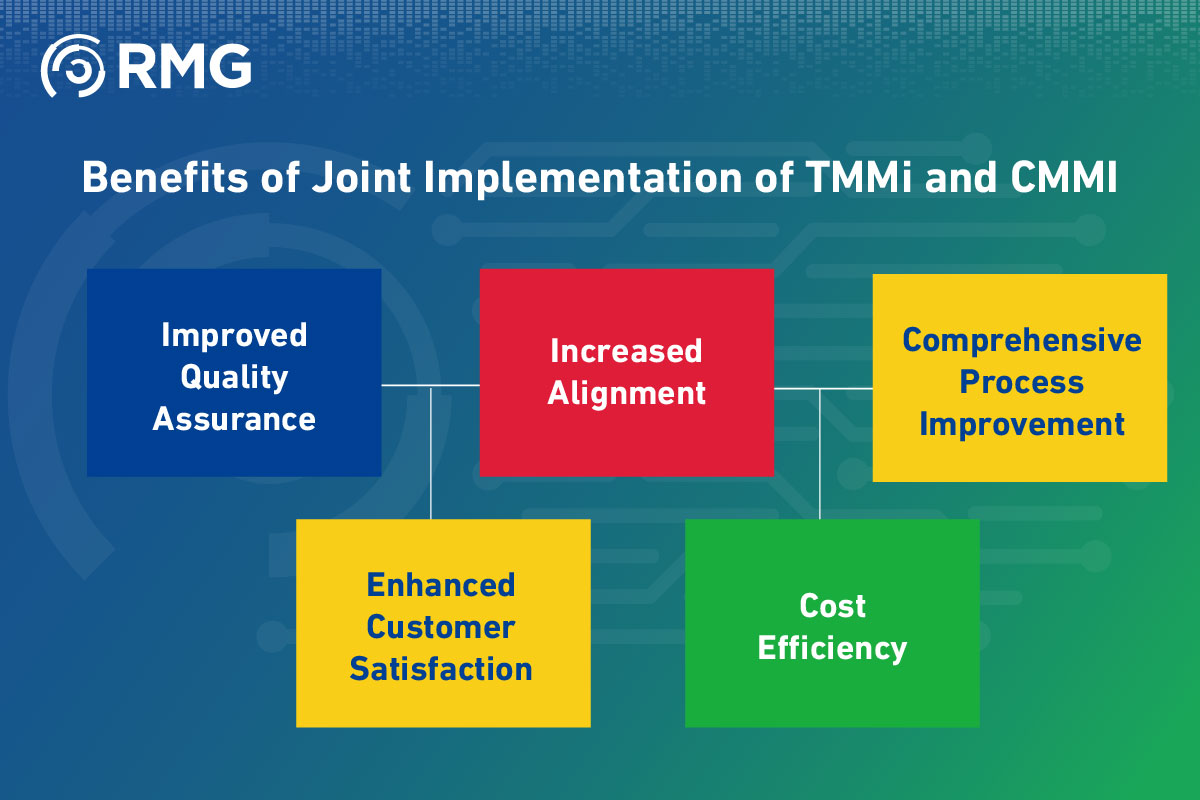
Best Practices for Implementing TMMi and CMMI Together
Conduct a Joint Assessment
Start by jointly assessing the current maturity levels of both CMMI and TMMi. This process will help you identify overlapping areas where development and testing processes need improvements.
Develop an Integrated Roadmap
Create a roadmap outlining how CMMI and TMMi will support the organization's overall process improvement goals. Prioritize initiatives that enhance both development and testing simultaneously.
Engage All Stakeholders
Ensure collaboration between development, testing, and management teams. Involve stakeholders from all departments early on to secure buy-in and promote a unified approach to process improvement.
Focus on Continuous Improvement
Since CMMI and TMMi emphasize continuous improvement. It's critical to foster a culture of ongoing learning and refinement. Encourage teams to share lessons learned and adjust processes based on data and performance
Leverage Automation
: Automation tools can support both development and testing processes. Organizations can accelerate the maturity of processes by adopting tools that facilitate automated testing, continuous integration, and deployment.
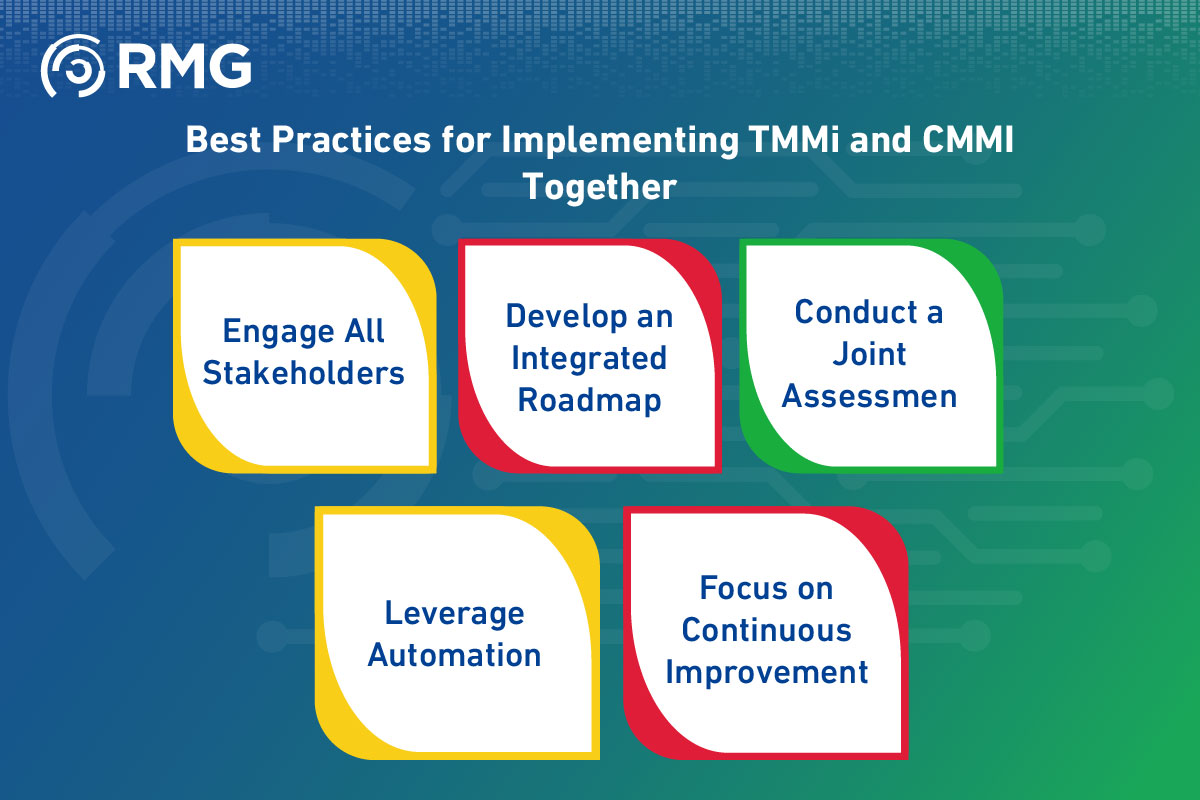
Conclusion
The TMMi model offers a structured pathway for organizations to improve their testing processes and achieve better quality results. Its benefits go beyond testing by aligning with business goals, reducing costs, and enhancing customer satisfaction.
Although the maturity journey may face challenges, with proper commitment and adequate resources, organizations can effectively use TMMi to establish world-class testing practices that drive success in the competitive software environment.
Implementing TMMi and CMMI together provides organizations with a comprehensive framework to improve development and testing processes.
Organizations can ensure that the entire software development lifecycle, from requirements gathering to testing and delivery, is structured, repeatable, and geared for continuous improvement by adopting both models.
While challenges may arise, careful planning, stakeholder engagement, and a commitment to integrating processes can improve product quality, efficiency, and customer satisfaction.
Why is Renad Al Majd (RMG) the Ideal Choice for Implementing the TMMi Model for You?
At RMG, we stand out with our deep expertise in implementing the Test Maturity Model Integration (TMMi)!
- We guide your organization step-by-step through the TMMi implementation journey. With our extensive experience in improving testing processes and our deep understanding of the TMMi framework, we provide a tailored approach that suits your needs and guarantees success.
- We have a proven track record of helping numerous organizations across various business sectors, from startups to large enterprises, improve their software testing by applying the TMMi model.
- RMG's team helps them achieve higher test maturity levels, enhance product quality, and increase testing efficiency.
- We offer a comprehensive range of advanced professional services, including initial assessments, roadmap development, process integration, and continuous improvement support designed to meet your business's unique needs.
- We help you achieve compliance with TMMi standards and foster a culture of quality and efficiency that drives success by combining industry best practices with a customized strategy.
- Our commitment to measurable results, practical solutions, and customer satisfaction makes us the ideal choice for your TMMi implementation consulting needs.
